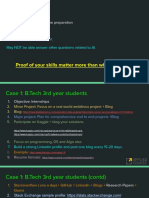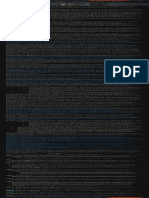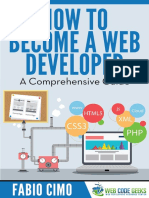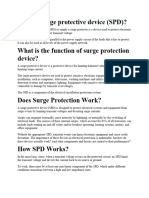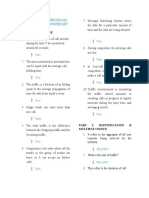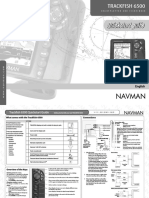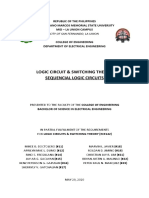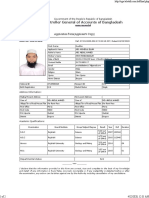Web Dev vs AI/ML – Time to Internship
A complete beginner can reach internship-readiness faster in web development than in core AI/ML. Web
technologies (HTML/CSS/JavaScript) have a short learning curve – for example, one guide notes a
novice can learn HTML in a few hours and gain practical web-dev skills in 3–6 months 1 . By contrast,
machine learning requires a solid foundation in math (statistics, linear algebra) and programming.
Estimates suggest even basic ML concepts take 3–6 months of dedicated study 2 , with proficiency
often requiring a year or more of practice. In 2–4 months a beginner will likely only cover the
fundamentals of ML, whereas web development fundamentals can be fairly well grasped in that time
1 2 .
Core Skills and Learning Curve
• Web Development (Front-end). Focus first on HTML, CSS, and JavaScript, which are essential.
These can be learned relatively quickly (HTML/CSS basics in days; JavaScript fundamentals in
weeks) 1 . Next, pick a framework/library (e.g. React, Angular or Vue) for dynamic pages. Learn
version control (Git/GitHub) and responsive design as you build projects 3 . Many web
internships ask only for basic coding skills (often explicitly listing HTML/CSS/JS and Git) 3 .
Typical entry-level roles emphasize front-end logic and user interfaces.
• Web Development (Back-end). Optionally, learn a simple server-side stack (e.g. Node.js/Express
or Python/Flask) and basic databases (SQL/NoSQL). These take longer, but even a minimal back-
end (or serverless with Firebase) can make a full-stack project.
• AI/ML (Data Science). Begin with Python programming (or R) and a grasp of mathematics –
especially statistics, probability and linear algebra 4 . Then learn core ML concepts (regression,
classification, basic neural nets) and tools like scikit-learn, TensorFlow or PyTorch. Build Python
proficiency (libraries like NumPy/Pandas) alongside math skills. This learning curve is steep: ML
internship advice emphasizes a strong math/programming foundation and hands-on projects
(e.g. Kaggle) before applying 4 . In 2–4 months you may only cover introductory ML models and
libraries.
Portfolio Project Ideas (1–2 months)
Building a portfolio is crucial. Start with small, self-contained projects:
• Web Dev Projects: e.g. a personal portfolio website (HTML/CSS/JS), a responsive landing page
or blog template, a to-do list app or calculator using JavaScript, or a simple CRUD application
(e.g. notes or inventory) using a front-end framework. Even cloning a popular site (e.g. a Netflix/
UI mockup) is valuable. These demonstrate HTML/CSS skills and JavaScript logic, and can be
completed quickly.
• AI/ML Projects: Focus on classic datasets and simple models. For instance:
• Iris Flower Classification: use scikit-learn to predict iris species from measurements 5 .
• Titanic Survival Prediction: a Kaggle dataset for binary classification with logistic regression or tree
models.
• Housing/Stock Price Prediction: simple regression on public data (predict housing prices or stock
trends).
1
� • Spam Detection: train a classifier (Naive Bayes or logistic regression) to filter spam emails 6 .
• Customer Segmentation: apply K-Means clustering to segment retail customers 7 .
• Handwritten Digit Recognition (MNIST): build a simple neural network for digit classification 8 .
• Sentiment Analysis: classify tweets or reviews as positive/negative using NLP (bag-of-words or
simple LSTM) 9 .
These projects teach data cleaning, model training/evaluation and are strong résumé builders.
Internship Opportunities and Platforms
Web Development internships are abundant. On major job sites (LinkedIn, Indeed, Glassdoor) and
student platforms (Internshala in India, AngelList for startups), one finds hundreds of remote web-dev
intern listings. Common titles include Front-End Developer Intern, Full-Stack Developer Intern, Web
Developer Intern, or UI/UX Developer Intern. Many listings accept beginners with portfolio projects
or coursework in web tech. By contrast, AI/ML internships are fewer and more competitive. Titles
include Machine Learning Intern, Data Science Intern, AI Engineer Intern, or Data Analyst Intern.
These often expect some project or coursework proof (and math knowledge) 4 .
Where to search: Useful platforms include: - Internshala – especially in India, lists dozens of remote
web and data science internships. - LinkedIn Jobs – filter for “remote” and “internship” to find many
Web Dev postings (1000+ globally) and some ML/Data Science roles. - Indeed/Glassdoor – search “Web
Development Intern” or “Data Science Intern” with remote filter. - AngelList (Wellfound) – startups
often list remote intern roles in dev and ML. - Career portals and hackathon sites – e.g. MLH (Major
League Hacking) offers paid remote internships (often oriented to open-source projects) and Kaggle
competitions or community events can be stepping stones (though they are not formal internships). -
University career services – if enrolled, many schools share internship listings from partner
companies.
Who to Apply To (Titles)
After 2–4 months of learning, realistic roles include entry-level internships: - Web: “Web Developer
Intern”, “Frontend Developer Intern”, “Junior Full-Stack Intern”, “UI Developer Intern”. - AI/ML: “Data
Analyst Intern”, “Machine Learning Intern” (sometimes labeled junior or research intern), “Data Science
Intern”, “AI/ML Engineer Intern”.
Many web-dev roles explicitly welcome beginners, whereas ML roles usually require demonstrating
some data project or skill 4 3 .
Recommendation and Next Steps
Web development is the faster path to a remote internship in 2–4 months. As one seasoned
developer notes, “the number of opportunities in Web Development is far greater…than…Machine Learning…
and the barrier to entry for Web Development is comparatively way less.” 10 . You see results quickly when
building web pages, which accelerates learning and motivation 11 1 . In 2–4 months you can build a
solid portfolio site and small apps to show employers, whereas core ML roles typically demand more
advanced preparation.
Learning priorities (Web Dev track):
- Master the basics. Start with HTML/CSS and JavaScript (plain JS). Use interactive tutorials or a
beginner course.
2
�- Build small projects. Create a personal website, a blog page, or simple apps (to-do list, calculator).
Put code on GitHub.
- Learn Git and GitHub. Version control is expected in almost every dev internship.
- Pick a framework. After basics, choose one JS framework (React is widely used) and build at least one
app with it. Understanding a framework will make you more attractive to employers 3 .
- Add basic backend (optional). If time allows, learn a bit of Node.js or Python/Flask and a database
(e.g. Firebase or MongoDB) to make full-stack projects.
- Apply widely. Once you have a few projects, start applying on LinkedIn, Internshala etc. Tailor your
resume to highlight your web projects and any relevant coursework.
By focusing on web dev fundamentals and rapidly prototyping projects, you can be ready to intern on
real teams. In summary, for quick internship-readiness within a few months, Web Development is
generally the better path 10 1 .
Sources: Authoritative guides and practitioners on learning timelines and internship requirements 1
2 3 4 10 .
1 Web Development: How Long Does it Take to Learn?
https://www.nobledesktop.com/learn/web-development/how-long-does-it-take-to-learn-web-development
2 How much time it take to Learn Machine Learning in 2024? | by javinpaul | Javarevisited | Medium
https://medium.com/javarevisited/how-much-time-it-take-to-learn-machine-learning-in-2023-8d9e24f03367
3 Interns: Prioritize Web Development Skills
https://www.linkedin.com/advice/1/what-do-you-youre-web-development-intern-trying-7jlqe
4 How to Become a Machine Learning Intern: A Guide
https://www.linkedin.com/advice/3/how-do-you-become-machine-learning-intern-skills-machine-learning-hdnkc
5 6 7 8 9 Top 15 Machine Learning Project Ideas for Beginners 2025
https://gaper.io/machine-learning-project-ideas-beginners/
10 11 This is how you become "Internship Ready" as a Web Developer [in 2022] (Part 1: Front-End) -
DEV Community
https://dev.to/rosekamallove/this-is-how-you-become-internship-ready-as-a-web-developer-in-2022-part-1-front-end-449g





















